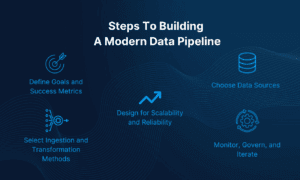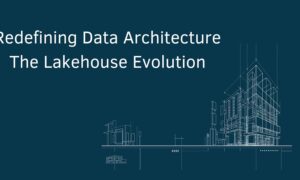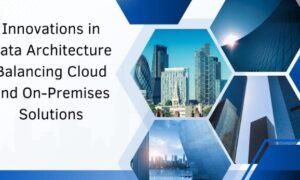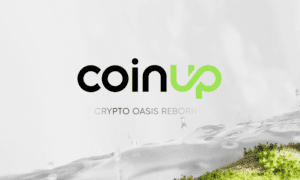Suresh Palli is a seasoned Data Architect and Engineer with over 20 years of experience in Information Technology, based in Pittsburgh, Pennsylvania. With a solid educational foundation in Computer Science and a Master’s in Computer Applications from Nagpur University, Suresh has established himself as a leader in AI Data Strategy and Architecture. His career has traversed several industries, where he has always provided innovative solutions to intricate data problems. With experience in cloud platforms such as Snowflake, Azure Databricks, and ETL/ELT tools, building AI and Analytics solutions. Suresh brings technical expertise along with strategic thinking to enable organizations to realize the maximum potential of their data assets. His core responsibilities include technical leadership and architecture (designing distributed, cloud-native data systems, developing scalable data pipelines, and ensuring data quality, security, and compliance), mentorship and team guidance (leading and coaching data engineering teams, setting technical direction and best practices), cross-functional collaboration (working with data scientists, analysts, product managers, and other engineering teams to define data strategies and deliver solutions), and innovation and problem solving (evaluating new tools and frameworks, troubleshooting complex data-related issues).
Q 1: What inspired you to become a data architect and engineering professional?
A: I’m a data enthusiast it excites to see endless possibilities with data. I started my path into data and analytics with a curiosity about how organized data can change business decision-making. In the early part of my career, I was working on database projects and saw the immediate impact of good data organization and access on operational effectiveness. It made me interested in specializing in data architecture. I derive immense fulfillment from crafting systems that transform raw data into useful insights, basically transforming information chaos into clarity. The ever-changing nature of data technologies challenges me intellectually, while the tangible business value of my work gives me a sense of purpose.
Q 2: How do you design enterprise-scale data warehouses, and what do you consider most important?
A: When designing enterprise-scale data warehouses, I begin with understanding the organization’s strategic objectives and how data supports those goals. My approach is holistic – considering not just technical requirements but also business needs and future scalability. Critical factors I evaluate include data volume, velocity, and variety; security and governance requirements; integration points with existing systems; and performance expectations for analytics workloads.
I’m a firm believer in the medallion architecture style, especially in cloud environments, as it gives a definite path of transformation from raw to polished data. I also look at implementation methodologies such as Data Vault for specific use cases, as it provides great flexibility for historical data and evolving business needs. In the end, a successful data warehouse design strikes a balance between short-term business requirements and long-term flexibility, allowing the solution to grow as the organization expands.
Q 3: Could you tell us about a notably difficult data project you worked on and how you handled the challenges?
A: The most difficult project I worked on was to upgrade a legacy data warehouse for a financial services firm that had very stringent regulatory needs. The system had been developed over a decade in an organic manner with very little documentation, poor data quality, and performance problems impacting mission-critical reporting.
We encountered a few challenges: tight compliance reporting timelines, change aversion from business users, and technical complexity from years of built-up customizations. To deal with these challenges, I first created a full data lineage to map dependencies. We then utilized a phased migration strategy instead of a “big bang” conversion to reduce risk.
I collaborated with business stakeholders to identify their requirements and show them how the new system would enhance their processes. To the technical team, I laid down strict patterns and standards that helped speed up development while keeping things consistent. We also constructed automated test suites to ensure data quality throughout the transformation process.
The greatest innovation came from developing a parallel environment that enabled business users to compare the outcomes of old and new systems, gaining confidence in the migration. This is what eventually achieved successful delivery with minimal business disruption and greatly improved performance for regulatory reporting.
Q 4: How do you integrate data quality and governance into your architectural decisions?
A: I see data governance and quality as not something to be considered later on but as building blocks that are incorporated across the data life cycle. In my architecture designs, I use “quality by design” concepts, incorporating validation checks at points of data ingestion instead of dealing with problems further downstream. This minimizes poor-quality data entering the system in the very beginning.
For administration, I create systems with well-defined lineage tracking, so we can follow data from source through to point of consumption. This is especially relevant in controlled industries where it is vital to be able to demonstrate the provenance of data. I also implement role-based access controls at more than one level – field, table, and schema – to define proper security boundaries yet provide proper access to data.
Metadata management is the other key aspect of my method. I develop standardized procedures for recording data assets, their definition, ownership, and usage policy. This documentation is a living document that is used to drive both compliance needs and improved insight into data assets throughout the company.
Lastly, I set up monitoring structures that constantly evaluate data quality metrics and mark anomalies for examination. This forward-looking strategy for data quality catches problems before they affect business decisions.
Q 5: How do you approach real-time versus batch data processing, and how do you determine the right approach for different use cases?
A: Deciding whether to use real-time or batch processing involves cautious evaluation of business needs, technical limitations, and cost considerations. I make this determination using a model that analyzes a number of influential factors:
First, I examine the business value of having data immediately available. In applications such as fraud detection, algorithmic trading, or personalization of the customer experience, the value of real-time processing is obvious. For operational reporting or less time-critical analytics, batch processing tends to be more effective.
Second, I compare data volume and complexity. Real-time processing generally requires more resources for computing, so I ask myself whether the business value is worth the incremental cost. In some cases, the right trade-off is a near real-time strategy using micro-batching.
Third, I evaluate the technical feasibility in the current architecture. Real-time processing is done using different tools and skills compared to batch processing. I have implemented solutions successfully with Apache Kafka, Spark Streaming, and other cloud services for real-time requirements and used traditional ETL/ELT tools for batch workloads.
In most of the contemporary data platforms I create, I adopt a hybrid strategy that processes various data domains via the right pipeline depending on their needs. This offers real-time processing where it provides business value while ensuring cost-effectiveness throughout the platform.
Q 6: What tools and technologies do you find most valuable in your data architecture work, and why?
A: Data ecosystem has grown exponentially over the last few years, and I have discovered some tools to be very useful for various parts of the data architecture work. In the cloud data warehouse domain, Snowflake has been revolutionary because of its storage and compute separation that offers phenomenal scalability and cost-effectiveness. In data lakes and sophisticated analytics, I have benefited immensely from Azure Databricks, especially for machine learning workloads that need high processing.
For data integration, I appreciate the versatility of cloud native data solutions sucvh as snowflake tasks and streams, dynamic tables, Informatica Cloud and DBT in supporting both traditional ETL and new ELT methodologies. Qlik Replicate, Fivetran has worked very well in change data capture scenarios, facilitating near real-time data synchronization with low source system disruption.
For data modeling and documentation, I depend on Lucidcharts and ERWIN Studio to effectively convey complicated architectures to technical and business stakeholders alike.
From a methodological point of view, I especially like the intersection of CICD practices (utilizing software such as Azure DevOps and GitLab) with data architecture. This aligns software engineering discipline with data workflows, enhancing quality and speed of delivery.
Finally, I think the most important tool is the one that solves the particular problem you have in front of you. I practice technology agnosticism while drawing on my experience with each of these platforms to choose the right tool for the particular challenge at hand.
Q 7: How do you work with business stakeholders and data scientists in order to foster a data-driven culture?
A: Strong collaboration between technical teams and business stakeholders is necessary to build a truly data-driven culture. I facilitate this collaboration through various channels and practices.
First, I spend time learning the business domain in-depth. Prior to talking about technical solutions, I sit down with stakeholders to understand their workflows, pain points, and goals. This establishes trust and ensures that technical solutions meet actual business needs.
Second, I provide frequent cross-functional working sessions involving data engineers, data scientists, and business users. Such sessions facilitate filling of knowledge gaps and shared understanding. I regularly use visual data models and architecture diagrams to demystify the complex concepts so that all parties involved can grasp them.
Third, I create fast proof-of-concept implementations to show value up front. Instead of holding out for ideal solutions, I prefer to display concrete progress that can elicit feedback and create traction for data projects.
To work with data scientists in particular, I create agile tools environments that enable their experimentation workflows while ensuring proper governance. That may involve self-service analytics areas with vetted datasets or tools-enabled collaboration spaces in the likes of Databricks.
Perhaps most significant, I specialize in translating from business to technical language and vice versa, making each group comprehend the other’s point of view. This role of translation is essential to fostering the mutual respect and common ground that supports an organization genuinely data-driven.
Q 8: What advice would you give to someone aspiring to enter the field of data architecture?
A: For anyone who wishes to become data architecture material, I have a few pieces of advice from my own experience. First, learn data fundamentals thoroughly. Learning about database theory, SQL, and data modeling fundamentals is important even while tools and platforms change. These fundamentals remain valid irrespective of the particular technologies you are using.
Second, build breadth throughout the data landscape. Specialization is useful, but the strongest data architects see how components collaborate. Practice working with databases, ETL processes, data warehousing, and analytics in order to gain this end-to-end view.
Third, develop both technical and business skills. Data architecture bridges the gap between technology and business value. Knowing how to turn business needs into technical solutions and convey technical ideas to non-technical stakeholders is worth its weight in gold.
Fourth, commit to ongoing education. The profession is constantly changing, so find time to investigate new technologies and practices. Attend industry conferences, engage with online forums, and try out new tools to keep yourself up-to-date.
Lastly, look for positions that get you involved in end-to-end data solutions and not isolated pieces. This holistic experience will create the pattern recognition that excellent architects use when building new solutions.
Keep in mind that becoming a good data architect is a process that takes time and varied experiences. Be patient with the process, learn from successes and failures, and concentrate on creating business value through data.
Q 9: How do you keep up with the fast-changing world of data technologies?
A: Keeping up with the fast-changing world of data requires conscious effort and a systematic approach. I’ve established a number of practices that enable me to stay at the cutting edge of data technologies and methodologies.
First, I schedule regular blocks of time specifically for learning and discovery. I prioritize this as an absolute aspect of my professional growth, just as athletes have training routines. This could be an hour every morning scanning industry publications or a Saturday afternoon dive into a new technology.
I also stay actively engaged with professional communities, both online and in-person. Sites such as Stack Overflow, GitHub, and niche Slack communities give a glimpse into upcoming issues and resolutions. Conferences and local meetups present chances for more in-depth conversations with colleagues who have similar issues.
For experiential learning, I frequently develop proof-of-concepts with emerging technologies. The short projects offer experiential learnings that may not be obtainable by just reading. Cloud platforms have provided this strategy in an even simpler way, wherein I can prototype services without needing large infrastructure expenses.
I’ve found tremendous value in maintaining a network of trusted colleagues who specialize in different areas. We regularly exchange insights and challenge each other’s thinking. This diversity of perspective helps identify blind spots in my knowledge.
Finally, I’ve learned the importance of balancing trendy technologies with fundamental principles. While exploring innovations, I evaluate them against core architectural principles to distinguish between transformative advances and temporary hype.
Q 10: What are your long-term career goals, and how do you plan to attain them?
A: My aspiration is to enable organizations to revolutionize the way they use data as a strategic asset. My goal is to close the typical gap between technical capability and business value realization for data initiatives. Specifically, my ambition is to guide enterprise data strategy and architecture that supports both operational excellence and data innovation products.
To realize these objectives, I’m working on several concurrent streams. One is continuing to expand my technical proficiency in next-generation technologies, specifically in domains where I identify intersections between legacy data platforms and AI/ML functionality. This way, I’m able to design solutions that are powered by cutting-edge methodologies.
Second, I’m deliberately broadening my business domain knowledge across industries. Understanding the distinct data challenges of various industries enables me to apply cross-industry trends and innovations more effectively.
Third, I’m refining my leadership and communication skills to better drive organizational transformation. Technical acumen alone is not enough for enterprise transformation; it takes being able to express vision, establish consensus, and lead teams through difficult transformations.
I also aim to contribute to the wider data community through writing, speaking, and mentoring. Not only do these knowledge transfers benefit others but also enhance my own knowledge via the process of explanation.
Long term, I envision myself playing a bridge role between C-level strategic goals and data implementation, enabling organizations to get the full potential out of their data assets through careful planning and implementation.
About Suresh Palli
Suresh Palli is a lead data engineer and architect with more than 20 years of experience in information technology. His skills include enterprise data warehouse design, ETL/ELT development, real-time data processing, and analytics implementation. Suresh has spearheaded data modernization projects across various industries, with specific depth in financial services, retail, and supply chain spaces. He is a BSc Computer Science graduate from Andhra University and has an MCA degree from Nagpur University, along with professional certifications such as AWS Certified Architect Associate and Scrum Master. Throughout his professional journey, Suresh has married technical capability with business sense to provide data solutions that yield quantifiable business results.



































